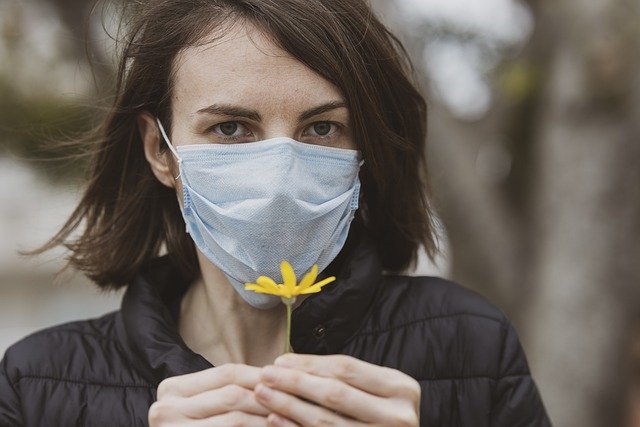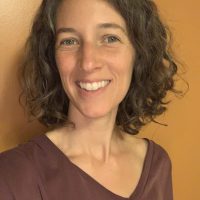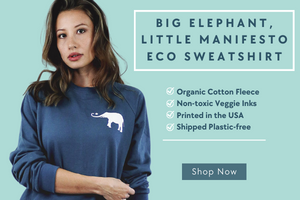Relephant read: Waylon’s continually updated article on the Coronavirus.
I have COVID-19, and I don’t.
I have it because I’ve had symptoms for nearly four weeks now. A cough that evolved into burning in my chest, shortness of breath, headache, persistent fever, tachycardia, dizziness, and fatigue. At the worst of it, I stayed in bed for eight days, sick, scared, wondering if it was time to go to the hospital. I also don’t have COVID-19, though.
I know this because I’ve been tested twice, and both tests came back negative.
Granted, I swabbed my own nose for the first test, a drive-in affair. Since then, I’ve experienced a proper swabbing, administered by an ER doctor dressed in so many layers of protective gear that she struggled to open the swab packaging. “I’m still getting used to doing nurse stuff,” she apologized and asked for my assistance. If I had realized that she intended to jab the swab into the back of my eyeballs, I might not have been so quick to help.
In any case, my failure to thoroughly plunge the depths of my nasal cavity during the drive-in test may explain the initial negative result. Plus, I was told that the test I was given was less than 70 percent accurate, anyway—that possibly 30 percent of people with COVID-19 would be given a false negative result.
As for this second test, I figured it would come back negative, too. I was already three and a half weeks into the illness, and many of my symptoms had resolved. It was my second day in a row fever-free, and though breathing still didn’t (and doesn’t) feel normal, I was getting enough air.
I hadn’t intended to be retested.
With my heart still thumping to strange and varying rhythms and my chest too achy for bras or seat belts, though, my primary care provider had reiterated several times that I likely had viral cardiomyopathy—virus-induced damage to the heart muscle, from which at least 50 percent of patients do not fully recover. That’s never good news—and during a pandemic, it feels particularly unfortunate.
With doctor’s offices on lockdown, hospitals canceling all but the most essential appointments, and urgent care clinics telling people with symptoms like mine to go to the ER, there was little I could do but sit with the anxiety of not knowing. Not knowing whether I would recover. Not knowing whether getting treatment sooner would make a difference. Would I be able to run again, to play basketball with my kids, to rock climb, to teach yoga? Would my heart just up and stop beating in my sleep?
At the prompting of friends and family, I finally went to the ER, hence the second and more memorable nasal swabbing. “I have good news!” chirped the woman on the phone two days later. “You don’t have COVID-19 or any other common respiratory viruses!” I wasn’t surprised, nor was I delighted.
I’m still in that spot. I’m Schrodinger’s cat; I have the virus, and I don’t, all at the same time.
The ER trip was worth it, though, for this bit of happy news: My EKG was fine, my blood work was fine, and I’m told this makes it extremely unlikely that I have cardiomyopathy. I’m just telling myself I don’t have cardiomyopathy because I like the ring of that.
My heart is fine! It sounds nice, doesn’t it? It just rolls off the tongue, and the world is suddenly a sunny place in which I will one day run without even noticing my pulse. And I do think this is probably true. I’ve had some weird and unexplained heart stuff in the past that has resolved on its own. I’m just granting myself this comforting shred of false certainty, though: the heart stuff will all resolve on its own, as will the other lingering symptoms. (Don’t worry, Mom, I’m keeping my May 26 appointment with the cardiologist just in case.)
My motto, in this instance: expect a lively and vivacious Schrodinger’s kitten when you open that box, but be ready to cover your preschooler’s eyes just in case.
Here are a few things I’m not certain about: whether I will lose people whom I love to COVID-19, when I can see friends and family again, whether I’ll have immunity to the coronavirus after all this, how long it will be until I’m well, how all of this will change me and change the world.
I’m lucky to be more or less certain about other things: we have enough money to make it through a few months of this, and I have a community of family and friends knit together by love, compassion, and now Zoom. I’m unluckier than some—being sick sucks—but luckier than most.
When my breathing troubles were at their worst, and I felt the most scared, and I had to call my ex-husband to hurry home (yes, we still live together; let’s all just agree that life is complicated, shall we?), I struggled up to my bed and curled onto my side, laboring for breath. I had asthma as a kid, so the feeling was familiar but different. With an asthma attack, it always felt like my airways were closing. With this half-dead-cat of a virus, it was my lungs that had shrunk. I could get air in, but there wasn’t anywhere to put it. I couldn’t hold enough.
It’s terrifying and lonely, the struggle for air, like the loneliness you feel at a cocktail party, surrounded by people you don’t know. There’s oxygen all around you, but apparently it finds you uninteresting, unworthy of conversation.
And then somehow, I don’t know how, I flew out of my own lonely and terrified body and imagined myself into an ICU, and I could feel thousands of people, who were even more desperate for air than I was. In that moment, thousands of other people were lying in their beds, intensely focused on each breath, wondering whether they would make it through the night. How many thousands were asking themselves, like me, if they should go to the hospital? How many thousands were in the hospital and worrying that they wouldn’t make it out?
The struggle for breath stopped feeling lonely, and the realization that in that moment, so many people were struggling more than me, helped me to relax into the strange shallowness of my breathing. I imagined myself breathing for all them, with them, counting out each inhale and each exhale, the way my ex-husband did for me once when I tried edibles and thought I was going to die. In, out, in, out. I willed a portion of my oxygen to float into the lungs of someone who needed it more than I did. In, out, in, and out.
It would be nice if this had some tangible, real-world effect—if it actually helped someone, even for a moment. I have no certainty at all about this. Certainties are scarce right now. The world is a confusing mishmash of incongruities: nearly 8,000 people have died in New York from COVID-19, and the number keeps climbing.
Global COVID-19 infections have passed 1.7 million, and the worst is still yet to come. So many of us will lose mothers, fathers, brothers, sisters, lovers, friends, and of course, also jobs and homes. Lives are being torn apart. But there are other truths, too: Everyday people like nurses, doctors, janitors, grocery store cashiers, and paramedics are stepping up as heroes, risking their lives to help others.
I went for a short drive with my children, and we counted one hundred teddy bears. A bird is singing in the maple tree outside my window. The tree’s branches are covered in pale green seed pods that will soon turn golden and flutter to the ground like little helicopters. I wonder how high a mound of 103,000 seed pods would rise—the current official global death count.
Sometimes I wish for one tidy truth to cling to that will pull together all these disparate threads of reality. One tidy truth that makes it okay for the world to be filled both with intense suffering and with intense beauty. One little truth to explain the absolute aloneness and sudden togetherness of this moment in history. How can the cat be so alive and so dead, all at the same time? Some have found truths that satisfy them: Jesus or Allah or yoga, perhaps. I haven’t. Also, I don’t expect to.
That’s not to say that I’ve succumbed to nihilism. Instead, I pull meaning and comfort from a sense of spaciousness. This may disappoint you if you prefer slogan-like truths. For me, though, it’s enough. Barely enough, at times. But enough. What if we don’t need to cut off this or that thread of reality? What if there is space enough for all of them?
By turning toward suffering—both my own and others’—I broaden my inner landscape. Suffering is never just suffering. We suffer because we love, long, hope, need, and care. And so in allowing space for suffering and space around our suffering, we simultaneously create space for gratitude, love, birdsong, and belly laughs.
Sometimes we need space for self-pity, and that’s fine, too, as long as we keep a little space around it. A little breathing room. That breathing room can be as simple as the recognition that someone else is struggling for air, too. That recognition, when wrapped around our suffering, self-pity, fear, boredom, or anger, is enough to hold them all in context. I am not this or that feeling. Nor am I alone in this or that feeling. We are alone together—hurting together, scared together, grateful together, lonely together, restless together.
We are alone together in the vast space of our little, interconnected lives. However dizzying the pace, we’ll get through this one swab, one breath, one act of heroism, one teddy bear, one moment of suffering, one meme, one heartbeat at a time.
~
Relephant:
How to Enjoy Life Amidst the Coronavirus Fear: Your Go-To Guide from Books to Podcasts & Wellness Practices.
What the Coronavirus is Teaching Me: 5 Lessons from Uncertain Times.
The Artist’s Stay-at-Home & Stay Sane Guide.
10 Simple Ways to Boost your Immunity without Leaving the House.







Read 15 comments and reply